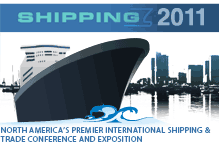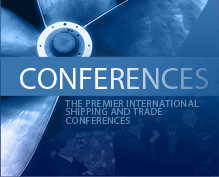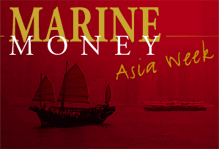
Greek Owners & The Nature of Equity
Based on their history and state of affairs, Greek owners have come into the global capital markets in their own way. As one industry expert observed, it is striking how few non-Greek shipping companies have gone public, so perhaps there is something to this transition worth noting for private shipowners around the world who are contemplating a dip into the public capital markets. In shipping as in life, timing is everything and certain opportunities are no longer open, at least for the moment. But there will always be new markets and new sectors on the upswing, and for the time being it appears that shipping’s access to public equity has built the critical mass it needed and is now here to stay.
Here we will take a brief look at exactly how Greek shipping companies evolved their corporate structure to fit the needs of public equity investors. This is not only intended for the benefit of shipping companies now entertaining the idea of a public listing, but also to provide some insight into the nature of the American public equity market. Continue Reading
SPACs Come into their Own
By Nora Huvane
It sounds like a great yet crazy idea, a SPAC, or Special Purpose Acquisition Company. Also known as a BCC, Business Combination Company, or in the vernacular of Wall Street the deal type is frequently translated to Blank Check Company. In its simplest form, the formation of one of these companies in shipping means that someone – a sponsor – decides they would like to purchase ships or a shipping company. Based on what are typically broad parameters, the sponsor then hires an investment bank and asks public investors to buy into the company. Armed with little more than good reputation and top-notch sales skills, the sponsor of a successful SPAC is able to convince enough equity investors to support them that they raise tens, even hundreds of millions of dollars.
Then the sponsors go shopping – for companies! Any company, really, that fits within the parameters they themselves set. Once they find a company, they can often get 70, 80% leverage from banks because, well, they are a public company. And their target, presumably, is bankable as a standalone entity. Then the shareholders get to vote on the acquisition. But in reality the shareholders invested in the company so that it would make an acquisition. And there’s a limited timeframe to do this, so as long as it’s a decent target for a reasonable price the shareholders can be expected to vote in favor. Continue Reading
While You Were Summering
By Nora Huvane
At Marine Money, summer starts after Marine Money Week. Officially, that means we can leave a bit earlier on Fridays in return for coming in a little earlier every other day. Traditionally, that means things slow down a bit.We have a chance to focus on the conferences and magazine issues coming up in the fall without worrying about losing track of a leisurely market. While this phenomenon has been less pronounced in recent years, those in the Northern Hemisphere don’t need us to tell them that as we headed into August, this year continued to move along at full steam.
Even with so much market activity our sense is that a substantial number of people have made it out of the office, at least for a week or two. As you return to your desks in September, we wish to provide a brief summary of all that has happened so that you may start the autumn fully informed. Continue Reading
HVB Finds Opportunity in the Challenge of Developing Yards
By Nora Huvane
Even whilst onlookers hold their breath in anxious expectation of a coming supply gut, 2006 was another record year for newbuilding orders with an estimated $110 billion in value added to the global orderbook. Clarkson estimates that the total value of the global orderbook is now upwards of $300 billion. Considering the financing commitments required for vessels on order and the uncertainties involved in many of those vessels being built as promised and delivered on schedule, this is a number that holds sizeable implications for the ship finance community.
Yet even as the scale of financing required grows, so do the complications involved. Established yards in countries like Japan and Korea have been seeing increasing competition from innumerable new yards in China, and now yards in other developing areas such as India and Vietnam are entering the picture. European yards for the most part have been forced to specialize in higher end products to remain solvent, yet at the same time those in Eastern Europe are facing the prospect of privatization, meaning growing demands in terms of profitability and a rapidly disintegrating safety net. Continue Reading
Profiling the Industry
By Nora Huvane
In putting together a volume-based league table, we have no intention to diminish in any way the importance of niche banks and specialized transactions. These institutions put together the transactions that are the bread and butter of much of the industry as well as our weekly publications. However we have found that it is helpful at least once a year to assess where precisely the major players stand. We believe this is as helpful for those seeking capital as for those who provide, helping to put the size of the ship-lending industry in perspective and offering some hope of a glimpse of its overall scale.
Therefore we have once again put together a shipping portfolio “league table” with the intention of complementing the Dealogic syndicated shipping loan league tables shown in the back of this issue. Dealogic’s tables provide insight into who the biggest arrangers of shipping loans are, while also showing who the most active players are in a given year allowing for the early identification of “up-and-coming” shipping banks. Meanwhile the portfolio league table we present here shows how much capital banks have actually committed. Coupled with the Dealogic tables, it also gives an indication of the strategies of leading syndicate banks – it is important to note that Nordea and DnB, in particular, do hold a substantial amount of debt considering the amount that they syndicate. Continue Reading
Trends & Tribulations in the Achievements of Ship-Lenders
By Nora Huvane
Each year when we take our annual banking market survey we have the unique opportunity to amalgamate the thoughts and opinions of shipping bankers across the world in various parts of the business. While this data can be broken down in countless ways, by anything from continent of business to astrological sign, the most useful correlation we have found is to break it down by the level of returns achieved and look for trends among the banks based on where they fell.
Most of what we found this year was worthy of some thought less because it is dramatically different than anything we have seen before, and more because it is indicative of the direction in which the ship-lending market is evolving. For example we see that firms that achieve higher returns are by and large better at keeping up spreads, but we also see that very few firms at all are successful at keeping spreads high enough to guarantee high returns. As a corollary to this, we see yet again this year that economies of scale work in the shipping industry, as those with larger portfolios have advantages in many arenas, not least importantly cost of capital. However size by no means guarantees returns, and smaller portfolio models are often successfully applied to win midlevel returns.
What really stands out is the growing amount of specialization occurring in the shiplending industry, a specialization that we hope and can believe mirrors at least to some extent the different financial “types” of shipping companies that are evolving as the industry matures in its relationship to the capital markets. Continue Reading
Of Cartoon Characters and Ship-Lending: 2007 Shipping Banker Survey
By Nora Huvane
Morten Heiner Pedersen is not alone in his sentiment. The comments that follow were all taken from actual responses we received when we sent out our banker survey this year, and while none are attributable we will tell you that at least one of the bankers was with a firm that achieved an ROE target of over 17% last year, so these are not just sour grapes. These, rather, are the voices of individuals when removed from the pressure and targets of the firm, individuals who in the midst of it all take a little time to contemplate what the longterm implications might be for the system in which they act daily. As it is seldom that we have the opportunity to watch competing bankers sit down together and discuss the business, we thought a Virtual Round Table might be a way to get a glimpse into what actually might happen were such a situation to occur…
Virtual Round Table Participant #1: We’re in Disneyland from a risk/reward perspective, but nobody likes to admit to themselves that they are really cartoon characters. Participant #2: I don’t think you know or have ever been to Disneyland…I recently have. Disneyland is a controlled environment where risk/reward is tightly controlled by those who have intelligently designed sophisticated rides, enlightened amusements and a fantasy world that is better than reality. The shipping markets are chaotic, based more on the probability that dinosaurs will roam the earth in our lifetime… and given the willingness of bankers to fund shipowners’ newbuilding commitments; steel dinosaurs will probably roam the earth in our lifetime!
Participant #3: At some point, institutions and borrowers are going to have to realize that the credit risk versus pricing return is completely out of balance. I’ve heard time and time again lenders complaining about the margins they get for the amount of risk they are taking.When will some one stop and remember that this business is not about how much top line volume you generate, but rather how much bottom line profit you keep. Who will be the first to firm up and stand up and say: “this Emperor has no clothes on”?????? Our favorite part about the whole thing is the cartoon metaphor. A cartoon character can be run over by a truck or blown up by dynamite only to return in moments, slightly worse for the wear but soon healed. In the same way a banker, fund manager or ship owner for that matter may engage in a disastrous and expensive endeavor then disappear, only to resurface later in a successful position. Not to say that most don’t take all the pains in the world to avoid a disastrous outcome, but just to give color to the metaphor. Continue Reading
Finnlines Rolls into Grimaldi Group
However we rarely see such transactions with public companies in venues like New York, as shareholder votes in response to tender offers result in an all or nothing outcome, with all shareholders seeing their shares either bought for cash or replaced with ownership in a new company, or typically a combination of the two. The result is very clear-cut however: the target company is privatized, it continues to operate in its present form, or it is entirely subsumed into another company. To do otherwise would be anathema to players in the New York market.
Outside the US, however, the game is often quite different. The regulations surrounding a variety of stock markets, such as those in Norway and Finland, require a bid for a public company once a certain percent ownership threshold is crossed but then allow each shareholder, rather than voting, to make a personal choice of whether to accept the offer or retain their shares and accept the influence or control of the new party making the tender offer. Continue Reading
Second Time’s the Charm
By Nora Huvane
While the previous article explains the bunkering industry and Aegean Marine Petroleum’s role in it, what it does not explain is why the company’s first attempt at an IPO faltered while its second attempt was quite successful.
It doesn’t seem likely that the year between when Aegean first filed and when it priced its IPO is simply how long it took Bear Stearns and the other underwriters to get a critical mass of investors to read Neil Cockett’s 3-inch bunkering “Bible” and reach a true understanding of the bunkering industry. And while Chemoil did price a bunkering IPO in Singapore slightly beforehand, Aegean Marine’s sudden success certainly could not be attributed to the sudden appearance of a universe of comparable companies.
In light then of Aegean Marine’s top range pricing and subsequent positive price performance, we thought it might be worthwhile to visit one of the key differences between the deal’s first time out and its much more successful second time. After all it is quite a feat for a company once turned away by the markets to return months later only to meet with resounding success. Continue Reading
Shariah Shipping Finance: A Developing Opportunity
By Nora Huvane
The combined economies of Saudi Arabia, Kuwait, the UAE, Qatar, Bahrain and Oman have grown by 74% over the past three years. Per capita income in Qatar has crossed the $50,000 mark and is now ranked the fourth highest in the world. Fuelled by petrodollars, regional banks are growing rapidly and developing vast pools of liquidity that they are anxious to invest, but there’s a catch. Much of that money answers to Shariah law and hence cannot be lent in the traditional sense because it is prohibited from collecting interest. Equity investments are more apt to be Shariah compliant and thus many of the Shariah dollars flow to global – and now local – stock exchanges.
But for companies, issuing equity is generally more expensive than raising debt. And simply because they are prohibited from collecting interest on standard bank debt or bonds does not mean that Shariahcompliant Middle Eastern investors do not like to diversify their portfolios with instruments that are lower risk than equity and provide stable returns. And where there is a will, there is a way. The trick is that finding that way, if a very good business for investment bankers and lawyers, can often be a costly proposition for investors and those raising funds.
Needless to say, then, when it comes to using Shariahcompliant investment products, there is a very delicate costbenefit threshold. And up through 2000 this threshold had not proved worth crossing for international shipowners, or for that matter for much of the international financial community. But as oil dollars continue to flow into the Middle East, construction booms, ship prices remain near historical highs, and the international ship finance community grows increasingly sophisticated, the cost-benefit equation has begun to change. Continue Reading







